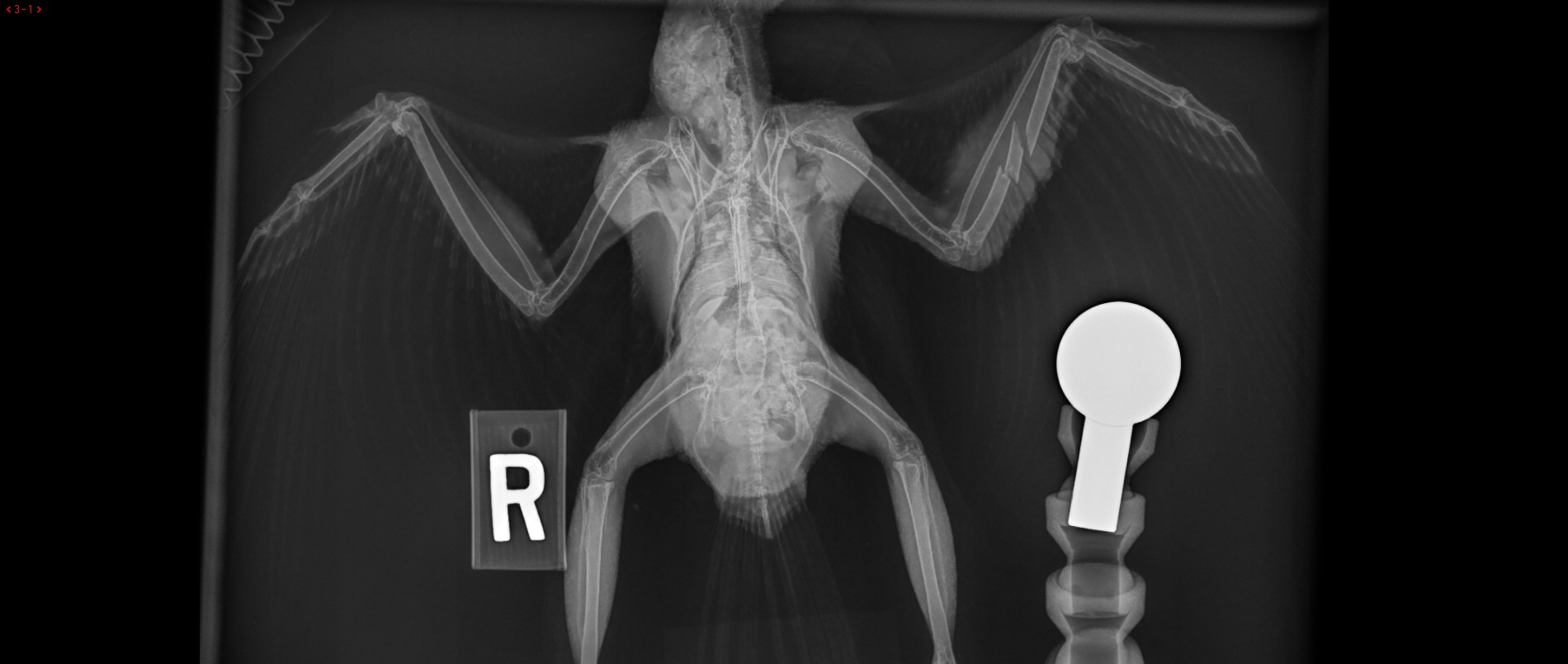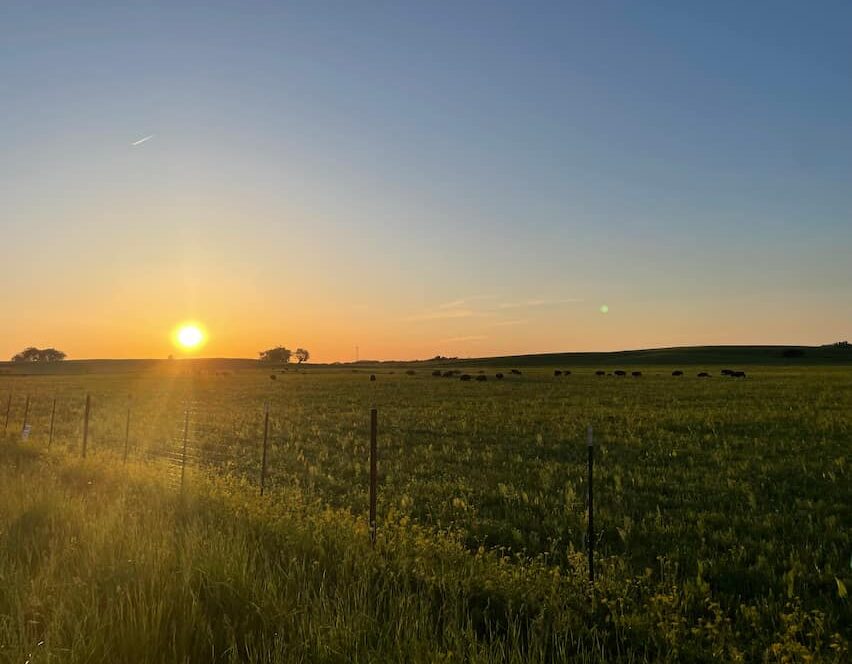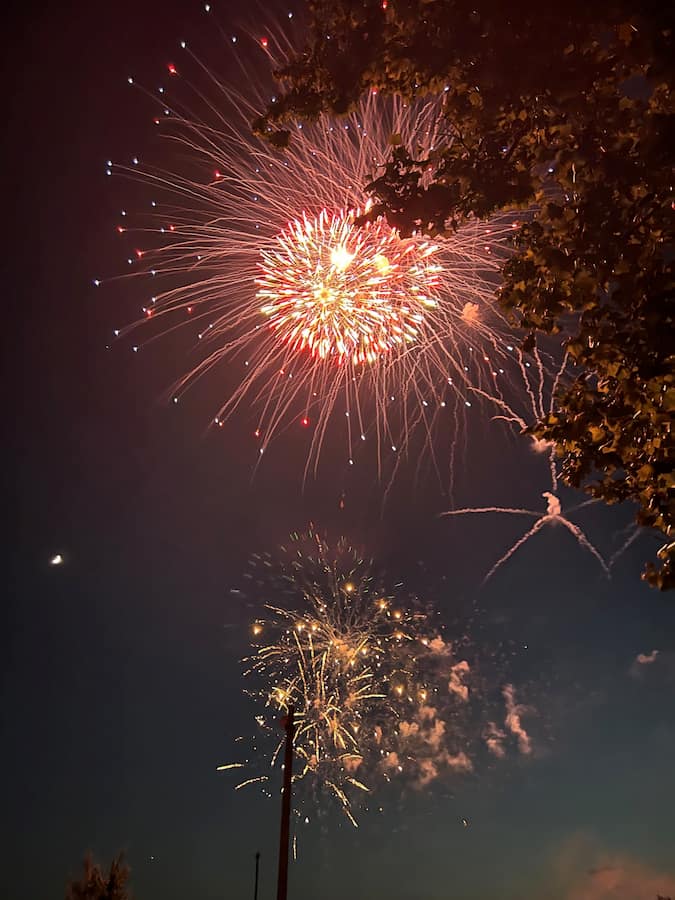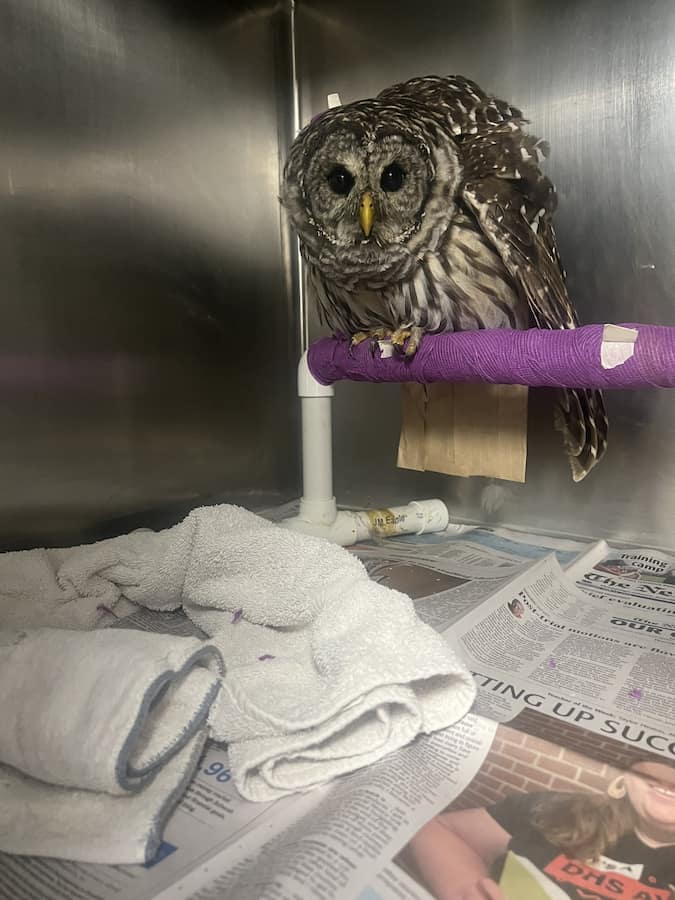When you break a bone, you might get a cast or a set of crutches from your doctor. But what do we do for birds with broken wings? Every year dozens of birds are brought to the Wildlife Medical Clinic with wing fractures, unable to fly. There are many steps we take to fix the wing and get them back to flying!
When a bird is brought to the Clinic, it is given a full medical exam. This includes, in part, listening to its heart and lungs, looking in its eyes, and palpating its wings and legs for any signs of injury. If a fracture is found, the bird is given pain medications to be more comfortable, fluids to correct any dehydration, and any injuries are cleaned and bandaged.
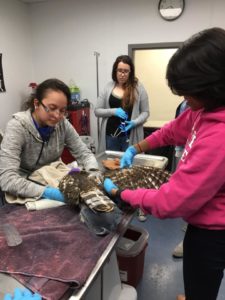
Before we can work to fix a fracture, we must first take radiographs, or x-rays! As you can imagine, wild birds aren’t the most cooperative patients when it comes to staying still for x-rays. So, for their safety and our own, birds are often sedated to ensure the process is as pain and stress free as possible.
Radiographs show us which bones are broken, where in the bone the break is located, and how significant the break is. This information is key to planning surgical correction of the fracture. When a wing is involved, often bandaging won’t sufficiently allow the wing to heal. Instead, the most common way we fix fractures is by surgically inserting an “intramedullary” (or IM) pin into the broken bone. This metal pin is drilled into the middle of the bone so that each piece of the broken bone is now lined up. Several “K-wires” (or Kirschner wires) are then placed perpendicular to the IM pin, with the ends sticking out of the skin. K-wires are the narrowest metal pins used in orthopedic surgery. These surgeries are difficult, can last several hours, and require significant training to place well. Radiographs are taken again after surgery to make sure the bones are properly aligned and ready for healing.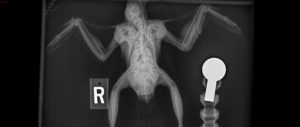
After surgery, an acrylic bar is attached to the ends of the K-wires. Think of it like a piece of clay that’s rolled out in a cylinder, placed over the ends of the K-wires. The acrylic hardens, securing the wires in place. The whole set-up is referred to as an “external fixator”. The bird will still need to have its wing bandaged for a few days until all the swelling goes down, but once the bandage is off the bird is able to recover with just the external fixature in place.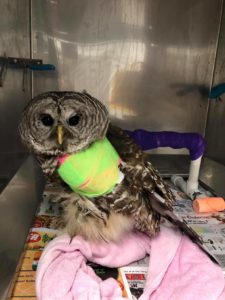
Birds get physical therapy after surgery just like people do! To make sure the bird will be able to fly, we gently extend the joints of the wing and hold them in that position for one minute, stretching out the muscles of the affected wing. We do this every few days while the bird is recovering, and every physical therapy session we measure how far the joints are able to extend with a protractor-like device called a goniometer. The angle we measure is called the passive range of motion, or PROM, and logging changes in the angle helps us see how well the bone is healing. We can also use a cold laser as part of the bird’s physical therapy plan, stimulating healing processes and reducing pain!
Birds bones heal much faster than mammals, and the bones may be sufficiently healed after just 3-4 weeks of care. Once the fracture site is stable, we remove all of the pins. The bird is then ready for flight conditioning before it can be released. For this, we typically partner with licensed wildlife rehabilitators who have the facilities to best support these birds during the final stages of their recovery. Once the bird’s feathers have fully regrown and it is flying well, it can be released back to the wild!
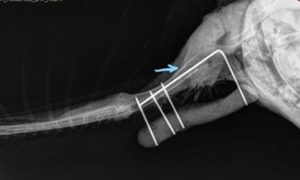
It can be a long process to fix a bird’s fractured wing, but it is incredibly rewarding to watch them improve from start to finish!
This article was written by Katie Havighorst, Class of 2022.

